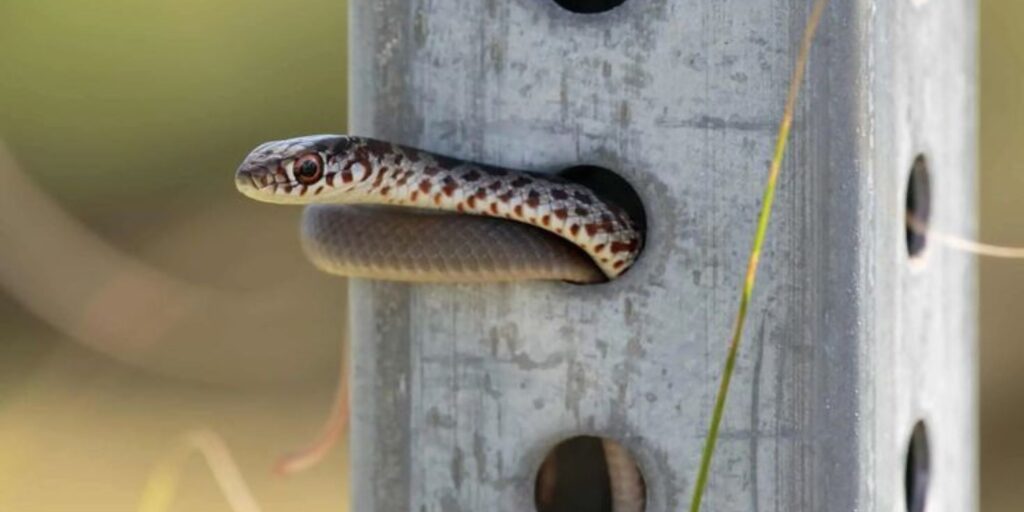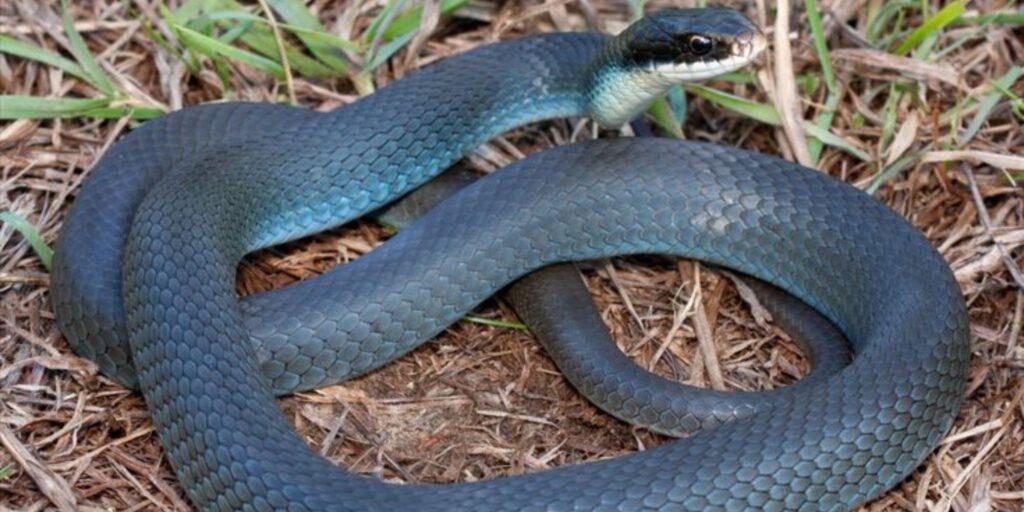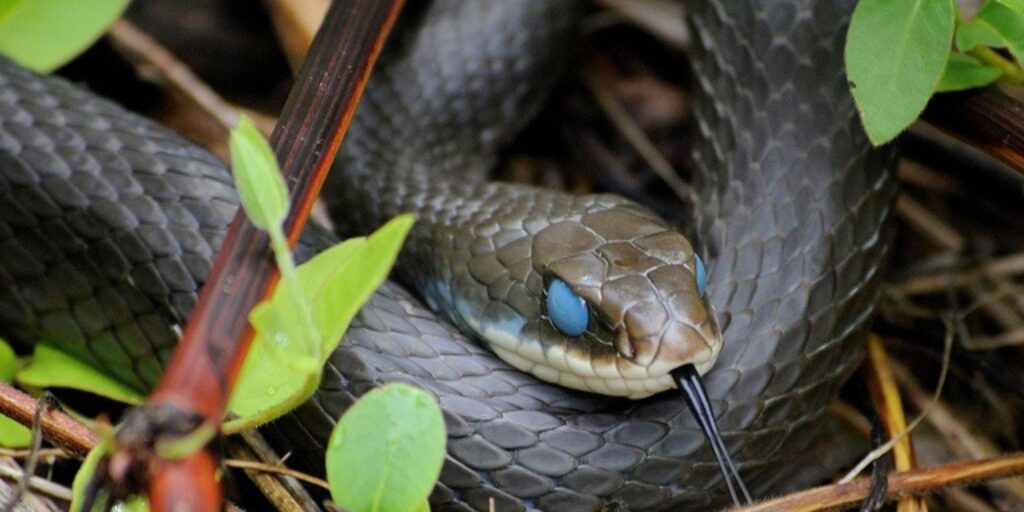Overview
The Blue Racer Snakes is a true gem of the reptile world. With its striking azure hue and sleek body, this snake captivates anyone fortunate enough to glimpse it in the wild. Not only is it visually stunning, but it’s also a fascinating creature with unique behaviors and adaptations that allow it to thrive in various environments. From its preferred habitats to breeding practices, there’s so much more beneath that vibrant exterior. Let’s dive into the life of the Blue Racer Snake and uncover what makes this species truly remarkable!
The Fascinating Life of the Blue Racer Snake: Habitat, Behavior, and More
The Blue Racer Snakes thrives in open habitats like grasslands, shrublands, and agricultural areas. Preferring warm climates, it can often be found basking in the sun or hiding among rocks and vegetation. Its adaptability allows it to inhabit a variety of environments.
Thanks to their vibrant blue scales, these snakes are excellent at blending into their surroundings. This camouflage helps them evade predators while hunting for small mammals, birds, and lizards. They are active during the day, making them an engaging sight for observers.
Blue racer snake :Introduction

The blue racer snakes is a captivating creature that has intrigued many wildlife enthusiasts. Known for its striking blue coloration, this non-venomous snake is more than just a pretty face. It plays an essential role in various ecosystems.
From the rolling hills of North America to their unique behaviors, there’s much to uncover about these fascinating reptiles. Understanding their habitat and lifestyle can enhance our appreciation for the natural world.
Blue racer snake :Physical Characteristics
The blue racer snakes is known for its striking appearance. With a vibrant blue or bluish-green body, it often features a light underbelly that adds to its charm. Adults can reach lengths of up to six feet, making them one of the larger snake species in North America.
Their smooth scales glisten in sunlight, enhancing their vivid coloration. Alongside their sleek form, they possess large eyes and a pointed snout, which aid in hunting and navigating diverse environments.
Blue racer snake :Habitat
The blue racer snakes thrives in various environments, particularly preferring open habitats. Across its range, it can be found in grasslands, fields, and sparse woodlands. It enjoys sunny areas where it can bask.
These snakes are also known to inhabit rocky hillsides and sandy dunes. Their adaptability allows them to thrive near human developments like farms or gardens. This versatility is key to their survival and helps maintain stable populations across different regions.
Blue racer snake :Behavior/Adaptability
The blue racer snakes exhibits remarkable adaptability in various environments. This species thrives in diverse habitats, from grasslands to forests, showcasing its ability to adjust behavior based on surroundings.
These snakes are known for their agility and speed, often darting away when threatened. They also exhibit a mix of boldness and caution while hunting. Their keen senses help them locate prey effectively while avoiding potential dangers. Such adaptability enables the blue racer snake to flourish across multiple regions despite changing conditions.
Blue racer snake :Reproduction

The reproduction of the blue racer snakes is a fascinating process. These snakes are oviparous, meaning they lay eggs rather than giving birth to live young. Mating typically occurs in late spring when temperatures rise.
Females can lay 6 to 20 eggs, often hidden in warm, moist locations like decaying vegetation or sandy soil. After about two months of incubation, hatchlings emerge, ready to face the world. Their survival depends on their ability to adapt quickly to their environment.
Blue racer snake :Conservation
The conservation of the blue racer snakes is crucial to maintaining local ecosystems. Habitat loss and degradation due to urban development, agriculture, and climate change pose significant threats.
Efforts are underway to protect their natural habitats and promote awareness about this vibrant species. Conservation organizations work tirelessly to ensure these snakes thrive in the wild while educating communities about their ecological importance. Protecting the blue racer means preserving biodiversity for generations to come.
Blue racer snake :Geographic Range
The blue racer snakes primarily inhabits the eastern and central United States. Its range extends from southern Michigan across Ohio to parts of Indiana and western Pennsylvania.
This species prefers open habitats like grasslands, prairies, and agricultural areas. Some populations are also found in forest edges and shrublands, where they can easily navigate their environment. Their adaptability allows them to thrive in various landscapes within this geographic range.
Blue racer snake :Life Cycle
The life cycle of the blue racer snakes is captivating, beginning with the reproductive phase. Females typically lay between 6 to 12 eggs in warm, moist areas during late spring or early summer.
After about two months, these eggs hatch into baby snakes around a foot long. Young racers are vulnerable and rely on their instincts to grow and survive. They shed their skin frequently as they mature, which signifies growth and development within this fascinating species.
Blue racer snake :hreats and Conservation Status
The blue racer snakes faces several threats, primarily habitat loss due to urban development and agriculture. These activities fragment their populations, making it harder for them to thrive in the wild.
Additionally, road mortality is a significant risk as they often cross roads while hunting or migrating. Climate change also poses challenges by altering their habitats and affecting prey availability. Conservation efforts are crucial to ensure this stunning species can continue to survive in its natural environment.
Identification and Distribution
The blue racer snakes is easily identified by its striking cobalt-blue coloration, varying from bright blue to a more muted slate. This slender snake features a long, streamlined body and a distinctively pointed snout that sets it apart from other species.
These snakes primarily inhabit parts of the Midwest and Eastern United States. They thrive in open grasslands, fields, and forest edges. Their adaptability allows them to be found across various landscapes, where they hunt for food and seek shelter.
Biology and Lifespan
The blue racer snakes boasts a sleek body designed for speed and agility. This non-venomous serpent can grow up to 60 inches long and showcase vibrant blue scales that often feature black or gray patterns. Its unique coloration provides excellent camouflage in various environments.
These snakes typically live between 10 to 15 years in the wild, depending on their habitat and predatory threats. Their biological adaptations allow them to thrive in diverse conditions, making them fascinating subjects for herpetologists and nature enthusiasts.
Blue racer snake :Economic Importance
The blue racer snakes plays a vital role in its ecosystem by controlling rodent populations. Preying on small mammals helps maintain ecological balance, preventing overpopulation and the spread of disease.
Additionally, this striking reptile attracts wildlife enthusiasts and researchers alike. Its unique appearance and behavior contribute to eco-tourism and educational programs. As people become more aware of the blue racer’s importance, conservation efforts will likely gain support, further highlighting its economic significance within local ecosystems.
Conservation Efforts

Conservation efforts for the blue racer snake focus on habitat preservation and management. Organizations are working to protect their natural environments from urban development, agriculture, and pollution.
Education plays a vital role as well. Raising public awareness about this intriguing species helps foster respect and appreciation for its ecological importance. Community involvement in conservation initiatives encourages sustainable practices that benefit the blue racer snakes and its ecosystem.
Resources
Various resources are available for those interested in learning more about the blue racer snakes. Field guides and wildlife encyclopedias offer detailed descriptions and photographs to help with identification.
Online platforms like nature conservation websites provide valuable insights into their habitat, behavior, and threats. Additionally, local herpetological societies often host workshops or talks that dive deeper into these fascinating reptiles. These resources can enhance your understanding of the blue racer snakes world.
References
Studying the blue racer snakes offers a glimpse into the intricate web of life within our ecosystems. Understanding its habitat, behavior, and conservation status is crucial for preserving this remarkable species. Numerous resources exist for those interested in learning more about these fascinating reptiles.
For further information on the blue racer snakes and related topics, consider exploring scientific journals, wildlife organizations, and educational websites dedicated to herpetology. Engaging with local conservation efforts can also provide insights into how you can help protect their habitats.



